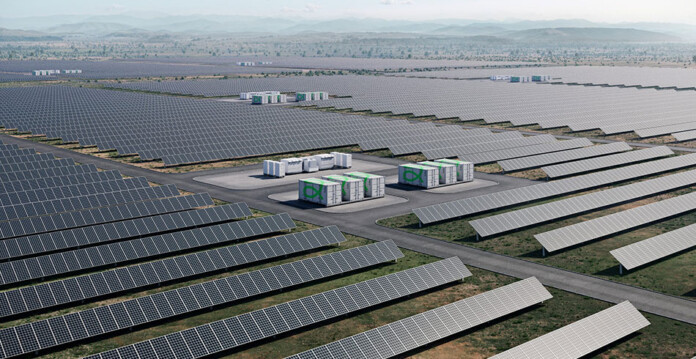Rio Tinto and Edify Energy have signed two new solar and battery hybrid services agreements (HSAs) to increase the supply of reliable, competitively priced electricity to Rio Tinto’s Gladstone aluminium operations in Queensland.
Under the agreements, Rio Tinto will purchase 90% of the power and battery storage capacity generated by the Smoky Creek & Guthrie’s Gap Solar Power Stations for 20 years.
Edify Energy will build, own, and operate the projects, with construction due to begin in late 2025 and targeting completion in 2028.
Related article: Rio Tinto buys entire output of Australia’s largest solar farm
Located in Central Queensland, the adjacent Smoky Creek & Guthrie’s Gap Solar Power Stations, will together feature 600MW AC of solar and 600MW/2,400MWh of battery storage.
Rio Tinto CEO Australia Kellie Parker said, “These agreements are integral to repowering our Gladstone aluminium operations with affordable, reliable and lower carbon energy for decades to come.
“For the first time, we have integrated crucial battery storage in our efforts to make the Boyne aluminium smelter globally cost-competitive, as traditional energy sources become more expensive.
“We continue to investigate further renewable energy investments to repower our Gladstone aluminium operations.”
When combined with the 2.2GW of renewable wind and solar PPAs Rio Tinto announced for its Gladstone operations in 2024, the Smoky Creek & Guthrie’s Gap agreements help secure a total of 2.7GW2 of future wind and solar energy in Queensland.
Related article: Rio Tinto reveals plans for 80MW solar farm in Pilbara
Together, the four contracted projects are expected to supply 80% of Boyne smelter’s annual average electricity demand, reducing the smelter’s scope 1 and 2 emissions by 70%.
Rio Tinto’s 90% share of the Smoky Creek & Guthrie’s Gap battery system capacity amounts to 2,160MWh, which will provide about 30% of the firming required to repower the Boyne smelter with renewable energy.
It will store green energy for reliable use during peak demand periods or low solar output, which will improve stability and resilience of Queensland’s power network.







